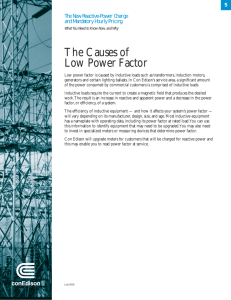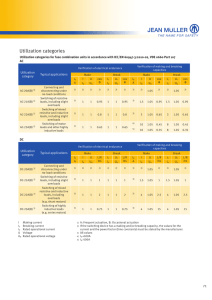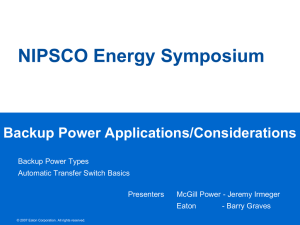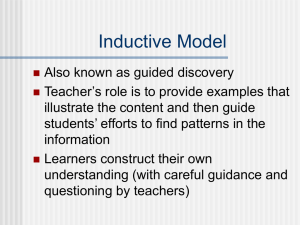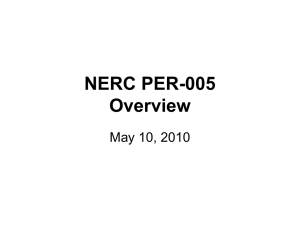Switching Inductive Loads
advertisement
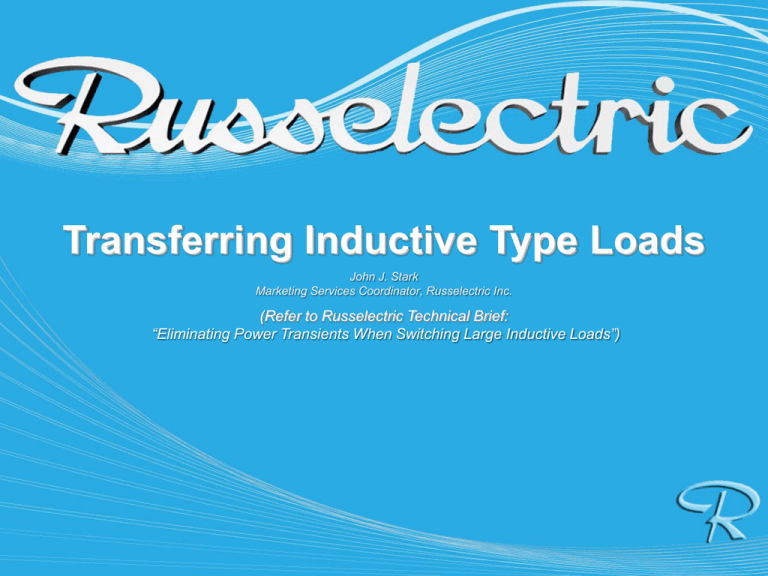
Transferring Inductive Type Loads John J. Stark Marketing Services Coordinator, Russelectric Inc. (Refer to Russelectric Technical Brief: “Eliminating Power Transients When Switching Large Inductive Loads”) In Phase Monitor VS Dual Operator For Switching Inductive Loads •Russelectric Recommends Dual Operator But, lets discuss both… In-Phase Monitor for Switching Inductive Loads or for Proper Closed Transition Switching (between two available sources) In-Phase Monitor, Principal of Operation A feature within the controller (or a synchro-check relay in old designs) where voltage values from source one and Source two are monitored through input signals to the controller. The controller compares the two voltage levels and phase relationship between the frequencies of both sources and will allow a transfer only when the voltage and frequency (of both sources) are within acceptable limits. Typical set points: 5% - 20% nominal volts Phase angle adjustment: 6 – 20 Electrical degrees Source 1 Source 2 ATS In-Phase Monitor for Switching Inductive Loads (between two available sources) Pros: •With some manufacturers this feature can be a significant cost savings over dual operator. Cons: •Introduces more sensitive and adjustable electronics and circuitry into the system. •If an acceptable window of voltage and frequency is not achieved, desired transfer will not happen. Example: ATS needs to return to utility after being in the engine generator (emergency) position… engine speed running erratically, no window achieved… switch in remote location… ATS remains on generator until it runs out of fuel. ATS Dual Operator Switching for Inductive Loads (open transition, between two available sources) Operator #1 drives the normal source contacts open N LL 1 2 The load source is disconnected for an adjustable period to allow regenerative power to decay Operator #2 then drives the emergency source contacts closed Dual Operator for Switching Inductive Loads (open transition, between two available sources) Pros: •Very reliable. Positive transfer without reliance on sensitive monitors. The switch will always transfer without the load experiencing a “bump”. •With an inherent dual operator design, ATS has an ancillary benefit in that it can also be used as a dynamic load shed device, completely controllable, either automatically, manually or in a control scheme. N L Life Safe ty & Support Branche s Utility Source ATS-1 Critical Branche s ATS-2 Utility Dis tribution Sw itchge ar Equipm e nt Branche s ATS-3 ATS - 3 Sheds Non-Critical Loads Em e rge ncy Dis tribution Sw itchge ar Loss of Engine #1 Ge ne rator Control & Synchronizing Sw itchge ar Load Control Circuitry G G G E E E E Dual Operator for Switching Inductive Loads (open transition, between two available sources) Cons: •Depending on the manufacturer this can be an expensive solution. N •Slight delay on transfers L Power Control People You Can Rely On!
